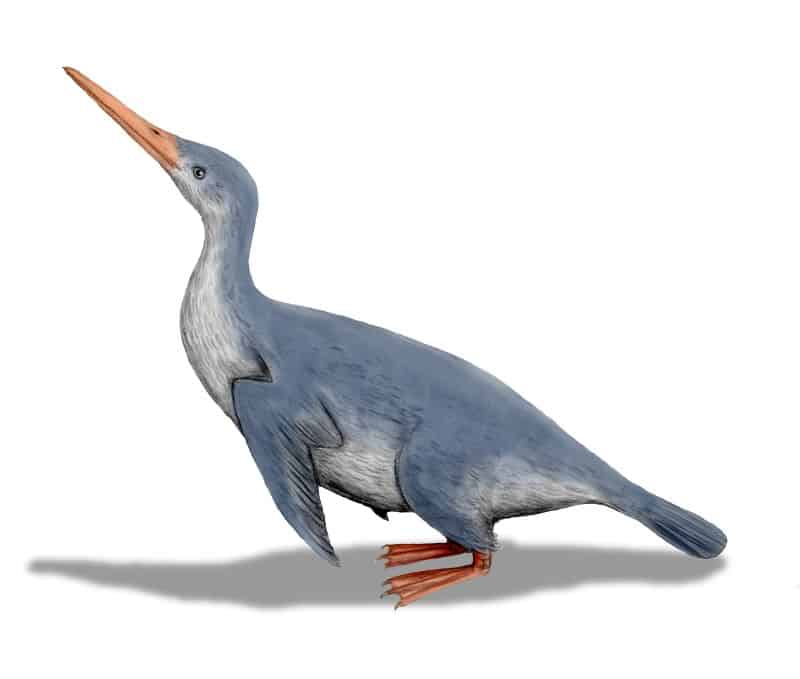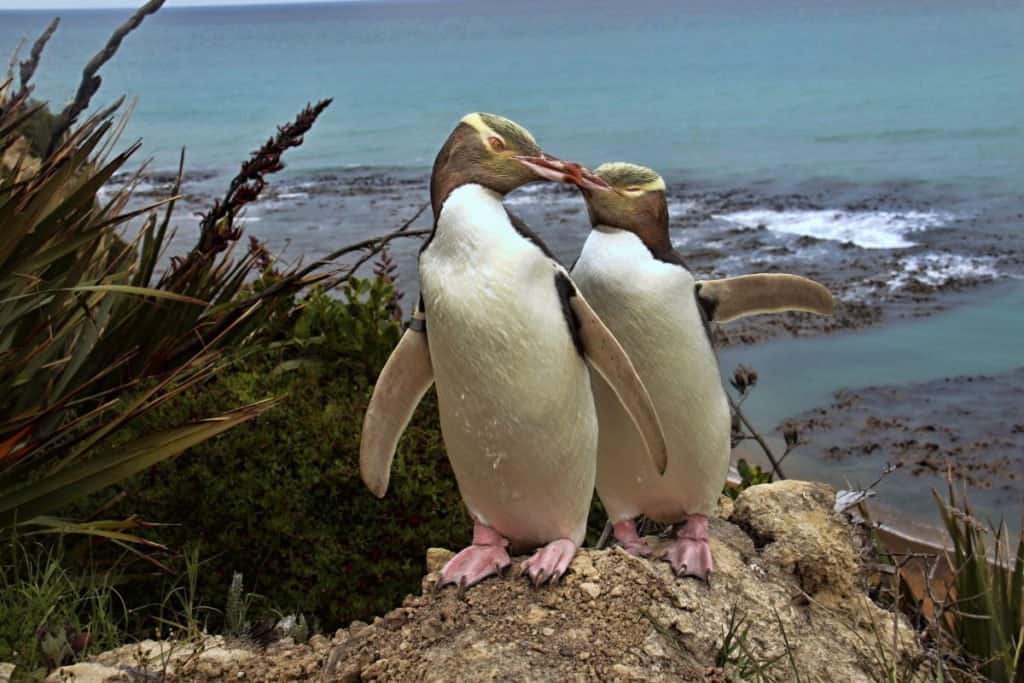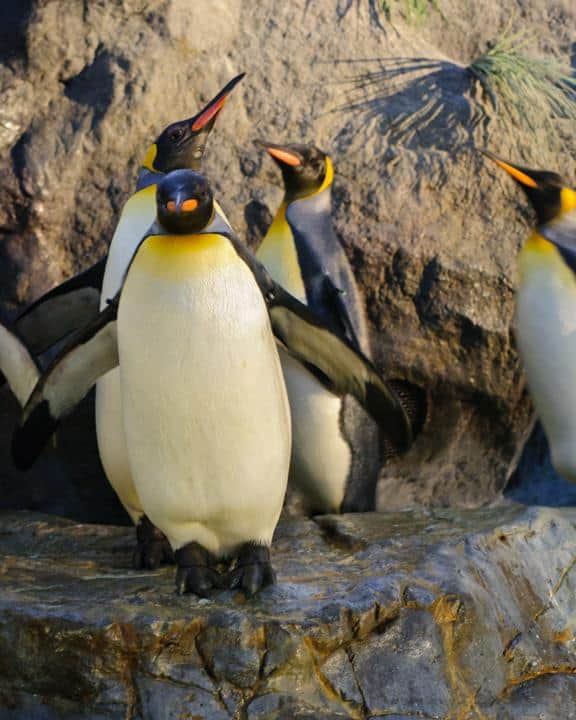Scientists are still trying to piece together the story of how birds became the most diverse life form on Earth. Some believe that modern birds evolved from dinosaurs, but others say that they came into being after the extinction of the ancient reptiles.
Now, though, researchers have found a new piece of evidence that supports the idea that modern birds originated long ago: they’ve discovered an extinct giant waterbird that lived in New Zealand about 60 million years ago. It’s called Waimanu, or “water bird”.
Waimanu appears to be a transitional species between ancient waterfowls and modern ones like ducks and geese, which have longer legs and smaller bills than their ancestors did. This discovery suggests that modern birds may have evolved from dinosaurs rather than coming into being after their extinction, as some scientists currently think.

Waimanu appears to be a transitional species
between ancient waterfowls and modern ones like ducks and geese, which have longer legs and smaller bills than their ancestors did.
©Size of this preview: 706 × 599 pixels. Other resolutions: 283 × 240 pixels | 566 × 480 pixels. – License
The Waimanu Inhabited Ancient New Zealand 60 Million Years Ago
Waimanu was a giant bird, about four to five feet tall. Although it was a type of penguin, it resembled a stork in its general shape, with long legs and sharp claws. It had massive wings, but they were not suitable for flight.
Like modern-day water-loving birds, Waimanu probably ate fish and amphibians that lived in the wetlands of New Zealand’s North Island. Researchers think it may have also hunted small mammals along shorelines near rivers where they were abundant at the time—and you can bet those mammals didn’t want anything to do with a five-foot-tall bird of prey with razor-sharp claws!

Waimanu probably ate fish and amphibians that lived in the wetlands of New Zealand’s North Island.
©ian woolcock/Shutterstock.com
One of the Largest Penguins in History
For decades, paleontologists have studied the bird-like fossils of Waimanu, but their efforts were largely unsuccessful. While it’s true that they were able to put together some of its fossil pieces, they didn’t realize what a massive creature it was until recently.
Once researchers were able to discover the Waimanu’s true shape by putting together all of its fossil pieces, they were astonished at its size: Waimanu is one of the largest penguins ever found in history.
The penguin-sized bird was an “enormous” creature. Standing about four or five feet tall (the size of a human child or smaller adult), it had a wingspan of more than 6 feet and weighed between 22 and 66 pounds.
While they could not fly, their compressed and dense wing bones enabled them to swim underwater with minimal drag or resistance. They may have also used their wings as a defense against predators while on the land.

The penguin-sized
bird
was an “enormous” creature. Standing about four or five feet tall (the size of a human child or smaller adult), it had a wingspan of more than 6 feet and weighed between 22 and 66 pounds.
©Vladislav T. Jirousek/Shutterstock.com
Waimanu vs. T. Rex?
The fossilized remains of ancient penguins appear shortly after the mass extinction event that ended the dinosaurs. The Waimanu and other ancient penguins are descendants of the surviving species from that era.
The discovery of the Waimanu sheds light on the evolution of penguins and birds. It likely lived in New Zealand between 60 and 50 million years ago, but it’s not the first penguin to have lived there; other fossils have been found that are older than this species.
The fossilized bones were so well preserved that there’s a lot we can learn about how these birds lived in the past—and what they might teach us about our own planet’s history.
Waimanu Hunted in and Around Lakes and Rivers
Like the modern penguin, Waimanu was a flightless bird. It grew to be as tall as an Emporer Penguin today.
Researchers discovered that the Wamanu had large eyes and a long beak with powerful muscles to crush prey such as fish and small mammals, which it ate while walking along the shoreline of lakes or rivers in its habitat.

Like the modern penguin, Waimanu was a
flightless bird
. It grew to be as tall as an Emporer Penguin today.
©BFS Man / CC BY 2.0, Flickr – License
Not Shaped Like a Modern Penguin
In addition to having a huge wingspan, Waimanu likely had an elongated and slender body, with a long neck and head. Its wings were strongly curved like those of an eagle, and its feet were webbed like those of penguins and seals.
This means that Waimanu probably spent much of its time in the water. They actually represent a fascinating mix of ancient and modern characteristics.
The bones of Waimanu were in between today’s flighted birds and living penguins. They were less compressed than modern penguins but more compressed than birds that fly. Today’s penguins have highly compressed bones that allow their wings to create a knife-like profile to cut through the water as they swim.
Although its legs were longer, Waimanu had short and stubby webbed feet and likely walked with an upright posture. So, it may have been comparable to a living penguin on land, but today’s penguins swim faster and more efficiently.
Living Dinosaurs, Birds are Diverse and Adaptable
By tying modern birds to ancient dinosaurs, the discovery of Waimanu sheds light on the evolution of penguins and the diversity of bird life on our planet. They are admired for their beauty and majesty but their importance to the history of life on earth is just as important.
You may not realize this, but birds are the most diverse group of animals on earth. They have evolved over millions of years in a wide range of shapes, sizes, and colors.
Birds inhabit every continent but Antarctica and have been found as high up as Mount Everest. Most species are endemic to one country or region, while birds often migrate thousands of miles between their breeding grounds and winter homes (which means they’re able to adapt quickly).
Birds also have many physical adaptations that are useful to their survival, including hollow bones and feathers, which help them maintain body temperature and keep warm in cold weather.
Birds are also the only living dinosaurs. Modern-day birds share an evolutionary history, with Tyrannosaurus rex and Velociraptor dating back more than 200 million years.
Modern birds are different from ancient birds in several ways. They have larger brains, which allows them to be more intelligent than dinosaurs were. Bigger brains mean they can solve problems more easily and use tools and other objects to find solutions to challenges. They also live longer than ancient birds.

A Yellow-eyed Penguin in New Zealand.
Waimanu Reveal Important Secrets About How Birds Evolved
Together with other specimens from other sites, Waimanu will help scientists learn more about how birds evolved and spread across the world.
Waimanu’s discovery provides scientists with an accurate picture of what ancient New Zealand looked like before humans arrived; it also provides valuable information about avian evolution that can help us better understand how modern birds came into being.
Giant penguins were alive on earth until about 25 million years ago. So, just how did this bird’s species go extinct? It’s hard to say. However, their disappearance did coincide with the emergence of toothed whales like porpoises and sperm whales, who may have found their large size and inefficient swimming made them easy to catch and delicious.
Questions and Answers
| Is Waimanu extinct? | Yes, the Waimanu is extinct. This early penguin emerged soon after the extinction of the dinosaurs and lived from around 60 million years ago to 25 million years ago. |
| Can Waimanu penguins fly? | Most scientists do not think the Waimanu penguins could fly despite a large wingspan. Instead, their compressed wing-bones made them effective in the water and may have helped them defend against predators on land. |
| What did Waimanu eat? | Since Waimanu penguins were not probably very fast on land but could swim efficiently, they likely ate a lot of fish. However, they may have also caught some small mammals from the shoreline of the lakes and rivers where they lived. |
| What did penguins evolve from? | Shortly after the disappearance of the dinosaurs, a giant waterbird called the Waimanu emerged. Remains found in New Zealand show it was four or five feet tall. Although the Waimanu’s legs and neck were longer than modern penguins, they are considered the ancient ancestors of all of the penguins alive today. |
Up Next:
Meet the Largest Carnivorous Dinosaur in History (Bigger than a T-Rex!)
The Top 10 Fastest Birds in the World
Meet the Spider That Eats Birds!
The photo featured at the top of this post is © Size of this preview: 706 × 599 pixels. Other resolutions: 283 × 240 pixels | 566 × 480 pixels. – License / Original
Thank you for reading! Have some feedback for us? Contact the AZ Animals editorial team.






